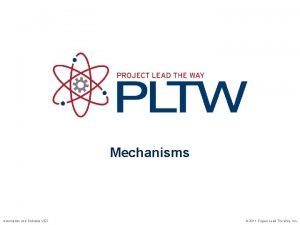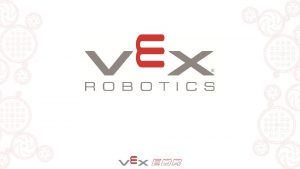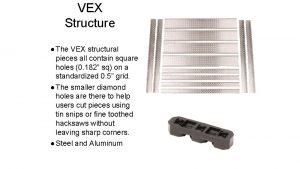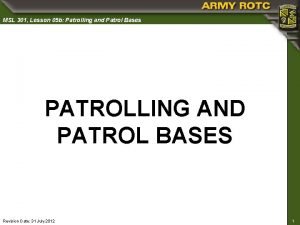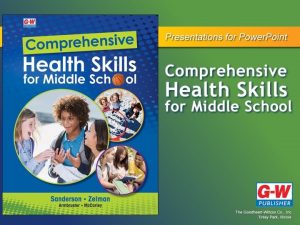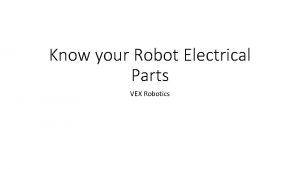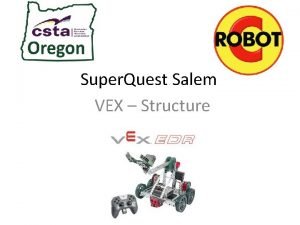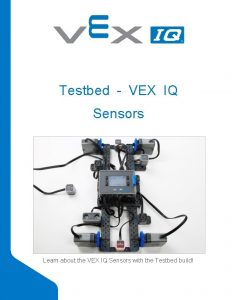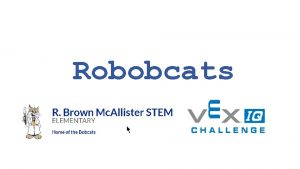Vex Parts Construction Priorities The goal when constructing










- Slides: 10

Vex Parts

Construction Priorities • The goal when constructing a mechanism typically falls into one of two categories: 1. Permanent – This type of construction emphasizes durability, but is usually more time consuming to build (and disassemble. ) 2. Prototyping – This type of construction emphasizes speed of assembly, but such constructs are typically significantly less durable.

Rapid Prototype • KEPS Nuts • Integrated toothed washer • The washer is placed against the pieces being connected. • Can be mostly hand tightened, and finished with a wrench. • Loosens rapidly with movement. Nuts Permanent Construction • Nylock Nuts • Has an interior plastic ring that resists turning. • Must be tightened or loosened with two tools. • Large hex wrench to hold/turn bolt. • Crescent wrench to hold/turn nut. • Does not loosen with movement

Drive Shafts • Also called axles. Come in Lengths of 12” and less than 6” • Drive shafts support wheels, gears, and other mechanisms. • Drive shaft must ALWAYS be supported in two separate locations by a combination of two: 1. 2. 3. 4. Motors Delrin Bearings Pillowblock Bearings Lock Plates

Bearings • Bearings “bear” or support drive shafts. • They either allow a shaft to turn freely with minimal friction, or lock it in place so it cannot turn, or connect it to a motor so it turns with the motor. Pillowblock Bearing – Supports parallel to structure. Delrin Bearing Flat – supports at right angle to structure. Lock Plate – Supports without turning.

Attachment Points Holes Slots • Holes on equivalent structural parts will automatically line up, making it easy to support shafts. • Holes on different structural parts may not line up. • Slots allow structures attached with bolts to have their attachment point adjusted along the length of the slot. • This makes it easier to line shafts up.

Baseplates • Large metal attachment plates. • Suitable forming large stable bases, or large walls for attachment of multiple parts. • These are labeled for purposes of identification.

Plates • Flat surfaces that provide attachment points. • These come in multiple sizes. • May be bent: DON’T.

Shaft collars • Clamping shaft collar – has a small 5/64” internal screw that can be tightened against the flat surface of a shaft, locking the collar in place. • The internal screws are small and get lost easily if unscrewed until they fall out. • The internal screws can be stripped easily if overtightened. • Best for resisting strong forces. • Rubber shaft collar – has a slightly smaller diameter, and is elastic. Can be slid onto a shaft, and is held in place by friction. • Easier to put on. • Cannot resist strong forces.

Tools • 6/64’’ Hex Keys – Thicker in profile. Used for black bolts. • 5/64” Hex Keys – Thinner in profile. Used for golden bolts (which use golden sockets) and for shaft collars. • Crescent wrenches – Fit KEPS and Nylock nuts.

